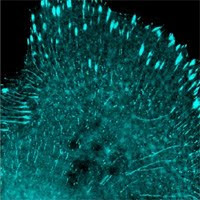AlleleBlog: http://allelebiotech.com/blogs/2011/04/having-trouble-cloning/
Plasmid construction is constantly going on in nearly all molecular biology labs. Although nobody would like to describe cloning a piece of DNA into a vector as a major obstacle to a research plan in a grant application, or a glorious achievement in a publication; cloning could be, and often is the most time-consuming and mind-boggling step in a project. A typical theme in DNA construct creation starts with preparing a vector by restriction enzyme digest and insert DNA by either digest or PCR. The two pieces are then ligated together before transforming into competent bacterial cells where the ligated DNA molecules are amplified and selected.
The key to a successful execution of this procedure relies on retrieving correct DNA fragments before ligation. DNA isolation and recovery are currently done with
PCR/gel extraction kit that utilize a silicon membrane immobilized inside a column, which can bind DNA (e.g. from a PCR reaction or a band cut out of a gel) in the presence of guanidinium. While this is a common practice in biological experiments, something often thought to be quite simple and straightforward; in reality it sometimes takes weeks or even months, repeat after repeat, before successful cloning is achieved. To increase cloning efficiency, people turn to “Super” competent cells, high concentration ligase, automated colony pickers, or high throughput sequencing for help.
Many sub-cloning projects get stuck due to plasmid recombination, by which a piece of DNA rearranges into a smaller plasmid than intended, often a bare-bone minimum plasmid that includes only the replication origin and antibiotic-resistance gene. This problem is amplified when either or both the vector and the insert fragments are large, or contain repeat sequences that destabilize DNA, such as those on viral vectors. Low efficiency of cloning is also a significant problem during library construction where a high degree of diversity is required. Recombination is facilitated by DNA nicks or breaks, something that can result from UV damage during gel viewing or by harsh chemical reagents in current DNA purification kits. The following is a recent real case of sub-cloning experienced by Allele Biotech researchers in our San Diego molecular biology lab:
Objective: cloning a group of 5 cDNAs (different versions or fragments from one gene transcript) into a retrovirus transfer plasmid for viral packaging
Vector: pCHAC1, ~12 kb, with terminal repeats
Insert: ~0.4-1.7 kb
Using standard PCR/gel purification kits (Allele Biotech), dozens or hundreds of colonies were obtained in each of the 5 rounds attempted, all of which were incorrect with various sizes below the projected size, including bare-bone (~3kb) plasmids. Different competent cells, (e.g. chemically
competent DH5a, electro-competent DH10b), secondary structure-tolerant strains, etc. were tried to no avail.
Changes: Avoid all UV exposure and harsh chemical reagents, use solid surface binding that tethers DNA after each restriction digest or PCR directly in the coated PCR tube in the presence of a special binding buffer, and elute DNA into just the required volume of reaction buffer for the next reaction, e.g. ligation, transformation.
Results: 4 out of 5 constructs were made after only one round, with more than half of the colonies examined being correct. The failure of the 5th one was attributed to an orientation mistake in the parental plasmid used as PCR template.
Conclusion: DNA damage during gel running, cutting, and DNA extraction can severely hinder the creation of a difficult DNA construct.
Promotion of the week: Promotion of the week: 10% off all Media (Insect Media, FBS, Cell Selection Media and more). To redeem this offer email abbashussain@allelebiotech.com with promo code Media10



